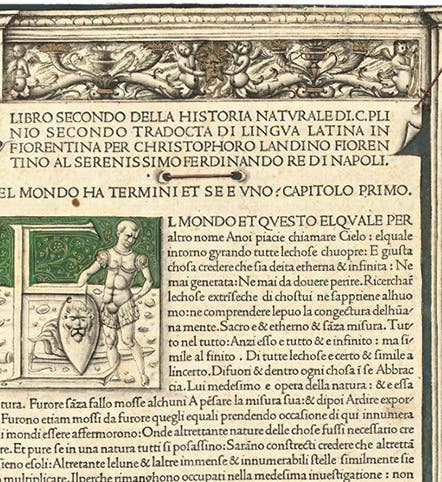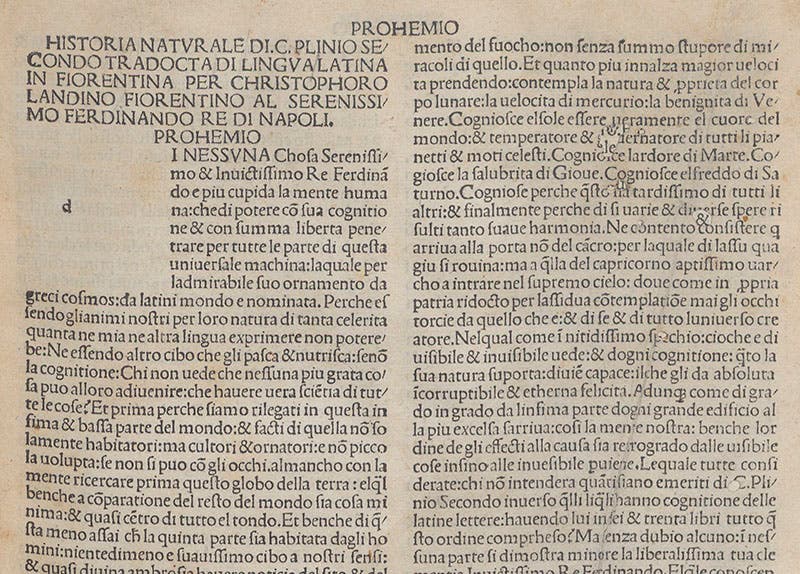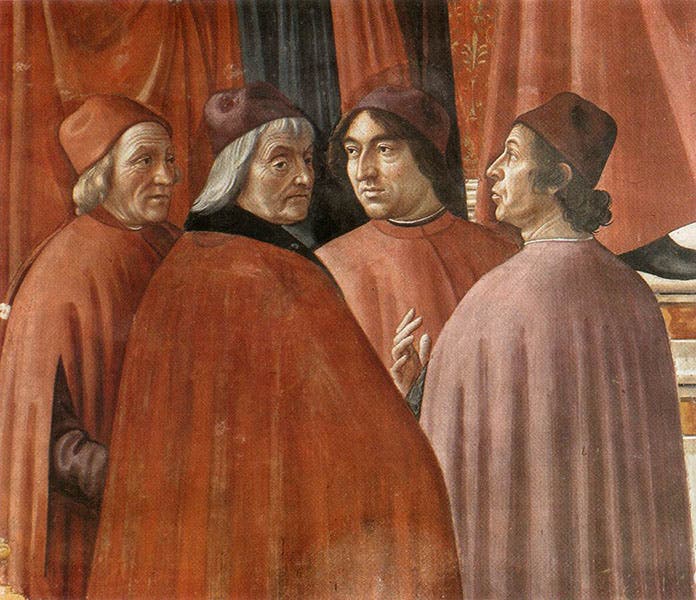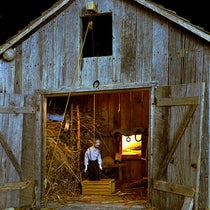Scientist of the Day - Cristoforo Landino
Cristoforo Landino, an Italian humanist, died Sep. 24, 1498, at the age of about 74. Landino was a lifelong resident of Florence and played a major role in the revival of letters that came to be called the Florentine Renaissance. You would not recognize much of what he did as science, but humanists such as Landino were the ones who stressed the importance and relevance of ancient knowledge and made possible the recovery of natural philosophers such as Plato and mathematicians such as Archimedes, Euclid, and Ptolemy. Without them, the scientific revolution would never have even begun.
Landino was a friend and colleague of Marsilio Ficino, the greatest of the Florentine humanists, and he was a member of Ficino's Platonic Academy. Landino was admired by the patron of the Academy (and of Florence), Cosimo il vecchio de' Medici, and was appointed as tutor for his two sons, Lorenzo and Giuliano de' Medici. Landino's writings are mostly literary – he wrote commentaries on Dante's Divine Comedy and Virgil's Aeneid – as well as poems and orations of his own. He was a strong advocate for the Tuscan tongue (which would eventually become what we call Italian). and this passion led him to his one great scientific contribution: the translation of Pliny's Natural History from Latin to Tuscan. This was a large undertaking – Pliny's text fills a fat folio volume – but it was a vernacular masterpiece. It was published in Venice in 1476 by Nicolas Jenson (in Venice because the new industry of printing had yet to be established in Florence). We do not have this first edition in our Library (although we do have a splendid copy of the Latin edition of 1472, also printed by Jenson, our oldest printed book), and so we show you a detail of the opening page of book 2 from a copy auctioned by Christie's in 2010, where you can see Landino's name as translator right after that of "Plinio Secondo". Landino's translation was not only the first printed appearance of Pliiny in another language, but it would be the only translation for almost another century. It was popular enough that it was reprinted in 1489 in Venice, and we happen to have two copies of that edition in our library. Our second copy came to us with the acquisition of the Engineering Societies Library (ESL) in 1995. The ESL copy is in a later and not very attractive binding, but it is nicer inside, and we show you a detail of the first page of the ESL copy. Neither of our copies has illuminated initials, although space had been left for them, as you can see.
Our only portrait of Landino is an incidental one, as he was included as a foreground figure in a painting by Domenico Ghirlandaio, Angel Appearing to Zacharias, in the Tornabuoni chapel in the church of Santa Maria Novella in Florence, 1486-90. We include here the entire painting (third image) and a detail of the group in the left foreground (fourth image). Landino is the second from the left, turning to face us. We have shown this painting in two other posts, on Ficino and Angelo Poliziano, as Ghirlandaio also included them in his grouping of four prominent Florentine humanists. Ficino is at the far left; Poliziano is second from the right. The fourth figure, at the far right, is Demetrios Chalkokondyles, who taught Greek in Florence. Even though his scientific credentials are non-existent, we might have to do a post on him one day, just to complete the quartet.
Dr. William B. Ashworth, Jr., Consultant for the History of Science, Linda Hall Library and Associate Professor emeritus, Department of History, University of Missouri-Kansas City. Comments or corrections are welcome; please direct to ashworthw@umkc.edu.









